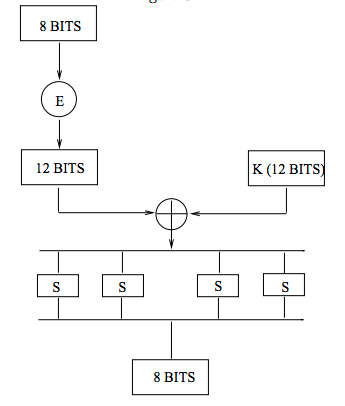Which maps the input data its output according the following lookup table
Consider the following bit sequence as the input data:
1011000110101100
7 14 3 10
15 6 11 2
Figure 2
5 3 8
Write down the expanded output.
f) Combine L1 and R1 into 16-bits bit sequence and apply the inverse permutation (IP −1 ).
2. Consider the following system where user A wants to send a contract to user B. Figure 3 illustrates the transmission. User A sends the encrypted hash function of the contract as well as the contract itself. After transmission over an unsecured channel, user B receives a contract ”A2” and a cipher C = 9. We consider a hash function, which maps the input data to its output according to the following lookup table. (ex: H(Contract = A1) = 4.)
Figure 3

